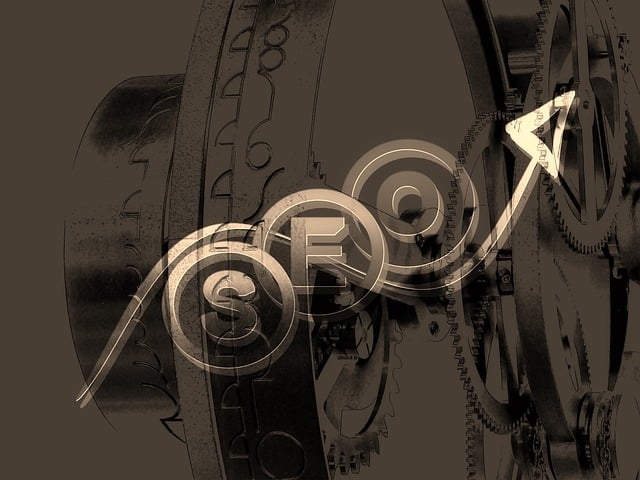Technical SEO optimizes websites for better search engine results, focusing on infrastructure and user experience. Key strategies include structuring content hierarchically, using structured data markup (Schema.org), optimizing URLs, and ensuring mobile responsiveness. Search engines crawl sites to index content, so Technical SEO enhances discoverability by improving crawlability with tools like robots.txt, XML sitemaps, and faster loading times. A well-architected site boosts user sessions, reduces bounce rates, and improves conversion metrics, increasing ranking potential. Mobile optimization is crucial as search engines favor responsive design. Performance optimization techniques like caching and image compression further enhance user experience while addressing issues that impact rankings.
In today’s digital landscape, on-site technical SEO is the cornerstone of online visibility. Effective optimization ensures search engines can easily discover and index your website’s content, leading to enhanced search results and increased organic traffic. This article delves into crucial aspects of on-site technical SEO, guiding you through key components like website structure, crawling, site architecture, URL optimization, structured data markup, mobile-friendliness, and performance. By implementing these best practices, you’ll empower your website to thrive in the competitive digital realm.
Understanding On-Site Technical SEO: The Cornerstone of Digital Visibility

On-Site Technical SEO is a fundamental aspect of digital marketing, serving as the bedrock upon which online visibility and user engagement are built. It involves optimizing a website’s technical infrastructure to enhance its performance on search engine results pages (SERPs). This includes ensuring that a site is crawlable and indexable by search engines like Google, which are responsible for delivering relevant content to users searching for specific keywords or phrases.
A well-optimized website ensures fast loading times, mobile responsiveness, and structured data presentation. These factors not only improve the user experience but also provide critical signals to search engine algorithms, allowing them to better understand the context and quality of the content on the site. By addressing technical SEO aspects, businesses can increase their site’s visibility, attract organic traffic, and ultimately, drive conversions.
Key Components: Essential Elements for Optimizing Your Website's Structure

Optimizing your website’s structure is a vital aspect of on-site Technical SEO, ensuring search engines can efficiently crawl and index your content. Key components include creating a clear hierarchy with a logical site architecture. This involves organizing pages in a way that makes sense to both users and search algorithms, with a well-defined home page as the central hub. Each page should have a unique and descriptive URL, reflecting its content accurately.
Additionally, implementing structured data markup helps search engines understand your website’s content better. This includes using schema.org markup to highlight important elements like product details, reviews, or events. Efficient internal linking is another crucial element, ensuring each page has relevant inbound links from other pages within your site. This improves user navigation and signals to search engines the importance of specific content.
Crawling and Indexing: Ensuring Search Engines Can Access Your Content

Search engines rely on crawling and indexing websites to understand their content, structure, and relevance. In the context of Technical SEO, ensuring these processes run smoothly is paramount. When a search engine crawls a website, its automated systems navigate through pages, collecting data and following links to build an index, which acts as a vast database of the site’s content. This index is then used to deliver relevant results to users’ queries.
For effective crawling and indexing, websites must be structured in a way that allows search engines to access all content easily. This involves optimizing robots.txt files, XML sitemaps, and using canonical tags to avoid duplicate content issues. Additionally, ensuring fast page load times, mobile-friendliness, and secure connections (HTTPS) enhances the overall user experience and signals to search engines that your site is of high quality and worth indexing thoroughly.
Site Architecture: Designing a User-Friendly and Search Engine-Approved Layout

A well-designed site architecture is a cornerstone of effective Technical SEO. It ensures that both users and search engines can easily navigate your website, boosting its discoverability and accessibility. A user-friendly layout means clear menus, intuitive navigation links, and a logical flow that guides visitors from one page to the next. This simplicity encourages longer browsing sessions, reduced bounce rates, and improved conversion metrics – all factors that positively influence your site’s ranking potential.
When structuring your website, prioritize creating a hierarchical structure with a distinct home page as the central hub. Use breadcrumbs and internal links strategically to connect relevant pages, allowing both users and search engines to understand the relationships between different sections. Remember, a well-organized site architecture not only enhances the user experience but also helps search engine crawlers efficiently index your content, ensuring your website performs optimally in terms of visibility and traffic acquisition.
URL Optimization: Best Practices for Clear and Descriptive URLs

URL optimization is a key component of on-site Technical SEO, focusing on making your site’s URLs as clear and descriptive as possible. This practice enhances user experience by providing relevant information about each page’s content, which in turn signals search engines about your site’s structure and relevance. Best practices include keeping URLs short and concise, using keywords that accurately reflect the page’s content, and structuring them hierarchically to mirror your website’s navigation.
Following these guidelines ensures that both users and search engine crawlers can easily understand where they are on your site and what each page is about. This not only improves crawlability but also increases the likelihood of higher rankings in search results. Additionally, URL optimization helps reduce bounce rates by providing a clear path for visitors to navigate your website, ultimately contributing to better overall performance.
Implementing Structured Data Markup: Enhancing Search Results with Rich Snippets

Implementing Structured Data Markup is a crucial step in enhancing your website’s visibility and performance in search results, especially from a Technical SEO perspective. By adding specific code snippets to your HTML, you provide search engines with detailed information about your web pages’ content, structure, and context. This structured data allows search engines to better understand your site, leading to more accurate indexing and improved display of rich snippets in organic search results.
Rich snippets are a great way to make your search listings stand out, capturing the attention of users scrolling through search engine results pages (SERPs). They provide additional context and valuable information at a glance, such as ratings, reviews, prices, or event details. Search engines like Google prioritize rich snippet-enhanced listings, as they offer users more relevant and useful data. This can significantly increase click-through rates and drive more targeted traffic to your website.
Mobile-Friendliness: The Importance of Responsive Design for Technical SEO

In today’s mobile-first world, ensuring your website is optimized for various devices and screen sizes is no longer an option but a necessity for effective Technical SEO. Mobile-friendliness plays a pivotal role in user experience and search engine rankings. Google, as the leading search engine, prioritizes sites with responsive design, meaning they adapt seamlessly to different platforms, from desktops to smartphones. This adaptability ensures that users enjoy a consistent, intuitive experience regardless of their device, encouraging longer browsing sessions and reducing bounce rates.
A responsive website structure not only benefits users but also gives search engines like Google a clear signal about the site’s quality and intent. It demonstrates a commitment to providing value to all visitors, which aligns with search engine algorithms designed to reward user-friendly, high-quality websites. By implementing responsive design, webmasters can improve their sites’ crawlability, indexing, and overall visibility in mobile search results, thereby strengthening their Technical SEO foundation.
Performance Optimization: Speeding Up Your Website for Better User Experience

Performance optimization is a key aspect of on-site technical SEO, focusing on enhancing your website’s speed and efficiency to deliver an exceptional user experience. In today’s digital era, fast-loading websites are essential for retaining visitors and boosting search engine rankings. By implementing caching mechanisms, optimizing images, minifying code, and leveraging browser scaling, you can significantly reduce page load times. These techniques ensure that your site responds promptly to user interactions, making it more engaging and user-friendly.
A well-optimized website not only improves performance but also reduces bounce rates and increases time on site. Search engines like Google use site speed as a ranking factor, so investing in performance optimization can have a direct impact on your overall SEO strategy. This involves regularly auditing your website’s performance using tools like Google PageSpeed Insights and taking proactive measures to address any issues identified.
